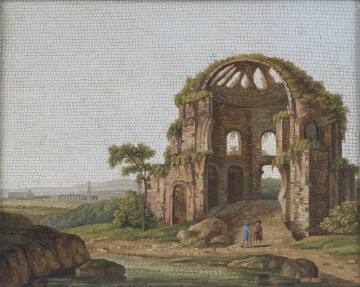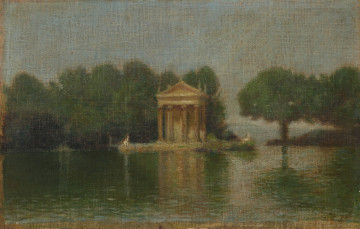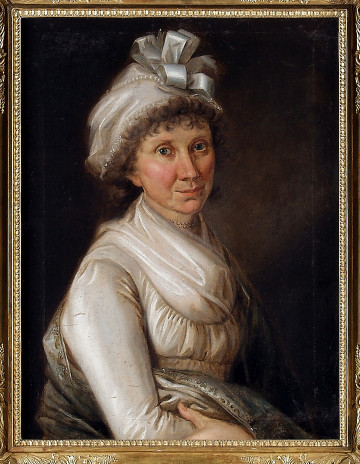
Temple of Minerva Medica in Rome
Museum of King Jan III's Palace at Wilanów
Part of the collection: Varia
The plaque with a view of the Temple of the Sibyl was made using the micromosaic ((mosaici in piccolo, mosaico minuto) technique, which – as in the case of traditional mosaic – is based on creating a picture from small hard elements in different colours. As the name suggests, micromosaics differed from the original mosaic technique in respect of a largely reduced scale of elements. The picture was composed of small, usually four-sided forms. They were created through the proper cutting of thin strips of non-transparent glass (smalti filati) with a plastic structure. The ready small elements were arranged to present the designed picture on an adequately prepared base closed with a frame and covered with consolidating mass (putty) inside. This technique was elaborated in the last quarter of the 18th century in Rome, where the Studio del mosaico in the Vatican performed high-class works based on the mosaic technique for the decoration of Saint Peter’s Basilica. The elaboration of this new kind of art is attributed to Giacomo Raffaelli (1752–1836), but micromosaic soon became one of the more popular branches of Roman craft. Works with views of Roman antiquities (and views and scenes based on natural motifs) were performed by many craftsmen whose workshops were concentrated around the Spanish square.
The Temple of the Sibyl in Tivoli is actually Vesta’s temple erected in the 1st century BC. Having partially survived as a ruin forming a part of the picturesque landscape, it is an example of top-class ancient Roman architecture. Its form, based on a circular plan, refers to Hercules’s (formerly Vesta’s) temple on Rome’s Forum Boarium. Although the form of the Tivoli temple is incomplete, it served as a model for many pavilions that were erected in Europe in the 18th century. An example of such building in Poland is the Temple of the Sibyl in Puławy erected upon the commission of Izabella Czartoryska, née Flemming, as the first national museum in Poland in the years 1798–1801.
Pictures “painted” by means of the micromosaic technique combined a few components sought after by 18th-century tourists from Northern Europe: they served as an iconographic document of what attracted the interest of people setting off for the Grand Tour – ancient art. However, their function was not reduced to a mere souvenir, because they were high-class artistic items in themselves.
Author / creator
Dimensions
entire object: height: 12,5 cm, width: 15,5 cm
Object type
painting
Material
glass
Owner
Museum of King Jan III's Palace at Wilanów
Identification number
Location / status

Museum of King Jan III's Palace at Wilanów

około 1900
National Museum in Szczecin

2nd half of the 19th century
Castle Museum in Łańcut
DISCOVER this TOPIC
Museum of King Jan III's Palace at Wilanów
DISCOVER this PATH
Educational path